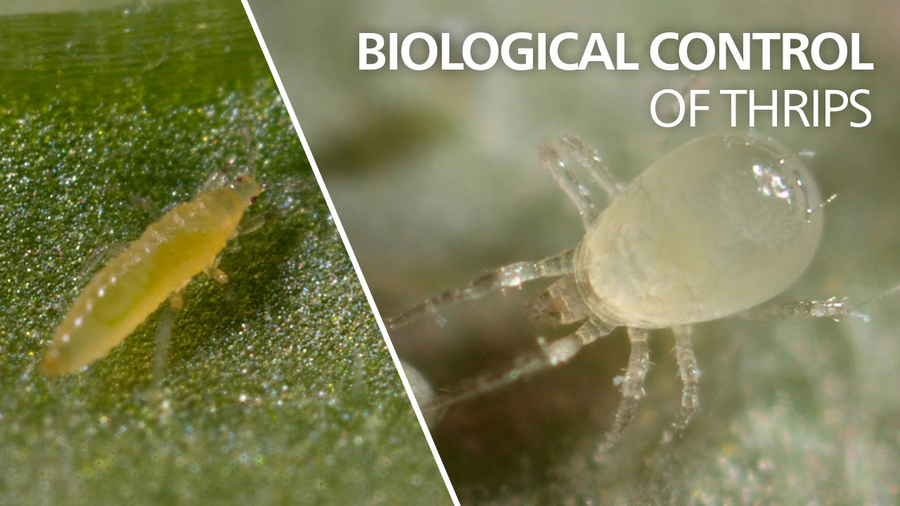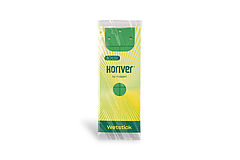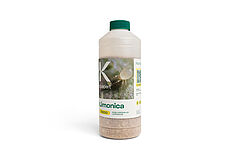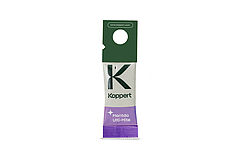

About Tobacco thrips
Thrips parvispinus, also known as tobacco thrips, is an insect native to tropical Asia and is widely distributed from East Asia, Northern Australia, and the Solomon Islands. In recent years, this thrips species has expanded its presence to northern China, India, and other Asian countries, as well as several African nations. In Europe, Thrips parvispinus was first detected in Greece in 1998 as a pest on ornamental crops, later appearing in Spain in 2017, France in 2018, the Netherlands in 2019, and Germany by the end of 2021. The tobacco thrips also reached Florida in 2020 and has since spread to several other states in the US and Canada.
Thrips parvispinus is particularly problematic in greenhouse crops, where warm temperatures and high humidity create ideal conditions for rapid multiplication. This thrips species is a serious pest of many cultivated plants, including important ornamentals and sweet peppers. Its short life cycle and high reproductive rate, with females capable of laying numerous eggs, make Thrips parvispinus a challenging pest to manage.
The feeding damage from Thrips parvispinus can significantly reduce crop yields and market quality, leading to rejected or downgraded plants and fruits. This pest is particularly harmful to ornamental plants, peppers, and papayas, where it has been responsible for significant economic losses.


How to detect Thrips parvispinus
Thrips parvispinus is a major pest in greenhouse crops due to its ability to multiply rapidly in the warm, humid conditions typically found in these environments. This insect poses a significant threat to a variety of cultivated plants, including ornamentals and sweet peppers. With a short life cycle and high reproductive rate, Tobacco thrips can quickly establish large populations, making early detection crucial.
To detect Thrips parvispinus, look for signs on the undersides of leaves and within flowers, where they are most commonly found. In cases of severe infestation, the thrips may also be visible on the upper sides of leaves. Larvae are primarily located on young leaves and, to a lesser extent, on flower buds. Adults tend to remain hidden.
In greenhouses, Thrips parvispinus populations typically start to appear in the spring and peak in the autumn, with minimal presence in the winter. However, in warmer climates, such as the Mediterranean, this pest can remain active throughout the year. Adult thrips have limited flight capability, while larvae, prepupae, and pupae have restricted mobility, which means long-distance dispersal usually occurs through the movement of infested plant material or wind.
Accurate identification of Thrips parvispinus is essential, as they closely resemble other thrips species found in greenhouse crops. Proper identification and timely action using the most effective management strategies are key to preventing significant damage.
Damage symptoms of Thrips parvispinus
Thrips parvispinus, commonly known as tobacco thrips, is a notorious pest that causes extensive damage to a wide range of plants. Recognizing the symptoms of a Thrips parvispinus infestation is crucial for early detection and effective pest management.
Deformation of young shoots and leaves
One of the earliest signs of a Thrips parvispinus infestation is the deformation of young shoots and leaves. As these thrips feed on plant tissue, they inject toxins that cause the foliage to twist, curl, and become distorted. This damage can severely impact the plant’s growth and overall health, reducing its ability to photosynthesize efficiently and stunting its development.
Burned appearance of leaves
At higher infestation levels, the damage caused by Thrips parvispinus becomes even more severe. Leaves may develop a burned or scorched appearance due to extensive feeding and damage to the leaf tissue. This not only compromises the aesthetic quality of the plant but also diminishes its vitality and productivity, potentially leading to reduced yields.
Scarring on fruit
Thrips parvispinus can also inflict significant damage on fruit. The feeding activity of the thrips often leaves scars and blemishes on the fruit surface, which reduces the fruit's quality and marketability. Additionally, these scars can serve as entry points for pathogens, further threatening the health and value of the produce.
Biological control of Thrips parvispinus
For effective biological control of Thrips parvispinus in greenhouse crops, Koppert has developed an innovative strategy based on years of research. This comprehensive approach integrates the use of predatory mites, such as Amblydromalus limonicus and Transeius montdorensis, alongside the beneficial insect Orius laevigatus (Thripor-L) and Koppert Horiver Wetstick sticky traps.
The predatory mites, Amblydromalus limonicus and Transeius montdorensis, are highly effective at seeking out and feeding on thrips larvae, which significantly reduces their population. Orius laevigatus, a predatory bug, targets both adult thrips and larvae, offering broad-spectrum control across all life stages of the pest. Additionally, Koppert Horiver Wetstick sticky traps are strategically placed to monitor and capture flying adult thrips, further reducing their numbers and preventing the pest from spreading throughout the greenhouse.
This integrated pest management strategy is highly effective in targeting Thrips parvispinus, protecting crops from damage, and reducing reliance on chemical pesticides.
Products
How to prevent Thrips parvispinus
By following preventive measures, greenhouse growers can reduce the risk of Thrips parvispinus infestations and maintain healthier crops:
- Install protective nets: Use nets with a minimum of 10x20 threads per square centimeter on roof windows and doors to prevent thrips from entering. Regularly monitor and maintain these nets, especially those in areas that align with prevailing winds.
- Check greenhouse coverings: Ensure there are no holes or gaps in the plastic coverings of greenhouses, as these can serve as entry points for thrips.
- Remove weeds and crop residues: Eliminate weeds and crop residues in and around greenhouses, as they can serve as reservoirs for Thrips parvispinus and other pests.
- Use healthy plant material: Source plant material from authorized nurseries or seedbeds to ensure they are free of pests. Begin using blue and yellow sticky traps early in the cropping season to detect and monitor thrips presence.
- Avoid mixing crops: Refrain from combining different crops in a single area, as this can complicate pest management and increase the risk of infestations.
- Practice crop rotation: Implement crop rotations to disrupt the life cycle of Thrips parvispinus and reduce pest buildup over time.
- Dispose of pruning waste: Remove and destroy pruning remains promptly to prevent them from becoming breeding grounds for thrips.
Life cycle of Thrips parvispinus
The tobacco thrips Thrips parvispinus develops through six stages: egg, two larval instars, prepupa, pupa, and finally the adult insect.
The eggs are laid in leaves, flower petals, and the soft parts of stalks. They are inserted into the plant tissue with a saw-like ovipositor. Development from egg to adult takes about 36 days at 20 ºC and around 23 days at 25 ºC.
Larvae are nearly transparent white or yellowish to orange-yellow, with a large head and bright red eyes. Adult females are brown, with the head and thorax lighter in color than the abdomen.
Tobacco thrips (Thrips parvispinus) usually pupate in the ground or growing substrate, although pupae can sometimes be found in flowers or other sheltered places on the plant. The prepupal and pupal instars can be recognized by their developing wing buds. Compared to the prepupa, the pupa has longer, more developed wing buds. The prepupal and pupal instars do not feed and only move if disturbed. In the adult stage, both pairs of wings are fully developed.
Adult females are brown, with a head and thorax lighter than the abdomen, and measure about 1 mm in length. Adult males are yellow-orange and much smaller than females, measuring approximately 0.6 mm.

























